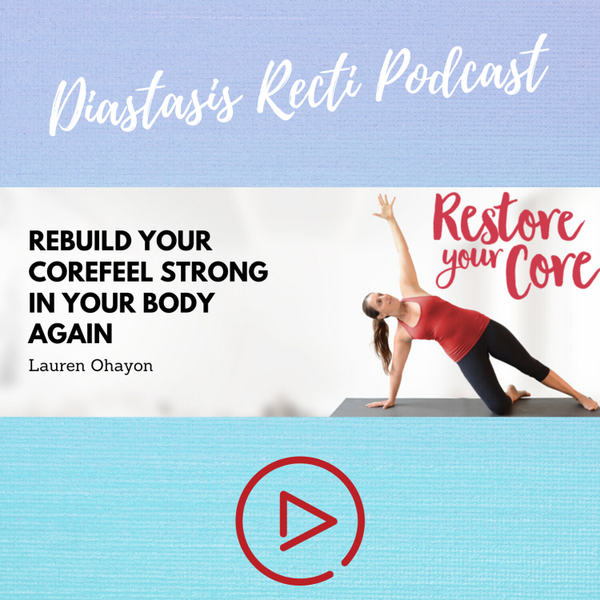
Diastasis Recti Exercises
- S1E12
- 02:48
- September 15th 2020
Diastasis Recti is an incredibly common injury that many people visibly notice as an indentation in the middle of the belly. The rectus abdominus muscle is a pair of muscles that run along both sides of your stomach. Diastasis is often visibly noticeable when a gap between the pair of muscles occurs. Your abs are separated by a midline band of connective tissue called the linea alba. The linea alba goes from the pubic symphysis to your xiphoid process.
During pregnancy, the abdominal region expands and various experts claim that around 1/3 to 1/2 of women experience a diastasis recti injury post-pregnancy. Men can also experience DR but its much less common and often associated with hernias. If you are a man reading this blog, we suggest you read our diastasis recti exercises for men article.
If you’ve noticed an abdominal bulge, linea alba stretching, muscle separation, lower back pain, leak pee, doming, invagination, or coning, you may have a diastasis. To perform a self-test, read our article on testing for diastasis, and always make sure you consult a doctor to get an expert opinion.
What Exercises Can Help with Diastasis Recti?
Some easy beginning steps to healing from a DR injury is to understand more about breathing, your core, and posture. They each play a surprising role in healing and in preventing injury.
1. Practice appropriate breathing patterns
Though this may seem like a simple task, many people do not practice proper breathing patterns. 3D rib breathing as opposed to belly breathing helps limit the amount of stress and pressure that you add to your abdomen daily. Inconsistent or improper breathing can add additional pressure to your abdomen causing a diastasis recti. Many people are taught that diaphragm breathing means belly breathing and have excess pressure on their core wall as a result.
2. Practice good posture and free your abs from excess tension
While pregnant, it can be difficult to sit-up straight without straining your abdomen and lower back. The added weight in your belly can also allow for bad posture. When rising up out of bed, don’t sit straight up. This adds unnecessary pressure to your abdomen. When sitting up in bed or trying to get out, try either rolling over on your side before rising or focus on rising using your transverse abdominal muscles (those closer to your pubic bone).
3. Understand a good / healthy / functional core strategy
Approaching strength building and core function routines, it is important to do so smartly. There should be no compromises in exercise. In both One Strong Mama and in Restore Your Core I focus on strengthening your body effectively and efficiently in order for you to be able to workout without any compensation with great results.
Restore Your Core: Diastasis Recti and Pelvic Floor Talks
The Restore Your Core podcast is all about health and fitness for those struggling with Diastasis Recti or Pelvic Floor issues.
Lauren Ohayon makes videos, runs a thriving facebook group, and creates blogs that help people to feel better and reclaim their healthy bodies.
https://restoreyourcore.com/learn/diastasis-recti/
If you're too busy to read the blog then feel free to listen to the podcast! We hope to be a part of your core restoration journey.